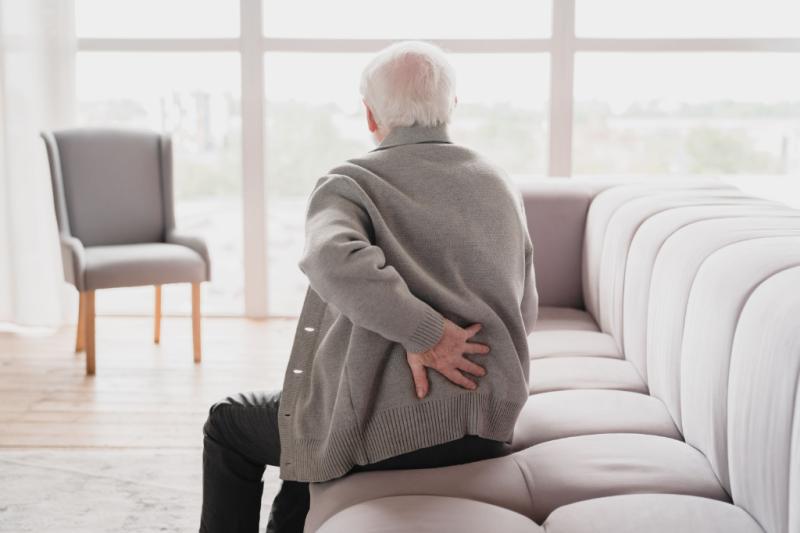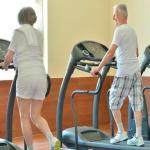Sciatica In Seniors: Causes, Symptoms, And Treatment

Among the elderly, most suffer from various types of pain all over the body, and the most common is sciatica. In one source, over one million men and women have been diagnosed with this common form of back pain affecting the elderly.
In most cases, the pain is describable as a burning sensation radiating from the lower back region down to the rear of one or both legs. Some experience discomfort in the lower back region, eventually extending to the legs or affecting any areas between the back and legs.
The cause of sciatica stems from inflammation of the sciatic nerve. Elderly individuals suffer the most from sciatica pain due to their age. As an individual starts to age, the muscles and nerves steadily deteriorate. In the long run, it can bring about pain along with muscular weakness. Furthermore, the risk is even higher among overweight seniors.
Regardless of the cause of sciatica, timely and proper management with conservative treatment measures or consulting a sciatica chiropractic doctor plays a crucial role in reducing discomfort and allowing seniors to lead a pain-free life.
Causes Of Sciatica
The root cause of sciatica is the irritation and inflammation of the sciatic nerve. All the nerve endings over the body can become inflamed, eventually disseminating shooting pain down the nerve.
During an assessment, the doctor will review the person's medical history, perform a physical examination, and order magnetic resonance imaging (MRI) to know the severity and source. In most circumstances, disc and bone deterioration increases the risk of injuries as one age.
Some individuals suffer from sciatica due to certain diseases, such as spinal stenosis or degenerative disc disease.
Other common causes of sciatica include:
- Impairment to the spinal nerve of the lower back
- Severe cases of arthritis of the back
- Compression of the spinal nerve due to a herniated disc
- Obesity
- Incorrect body mechanics
- Poor nutrition
- Muscle deterioration due to age
- Lack of exercise
There are also contributing factors that can aggravate sciatica. Some of these include a sedentary lifestyle, being overweight, and sleeping on a mattress that lacks support.

Symptoms Of Sciatica
The distinctive symptom of sciatica is pain. An individual with this condition will complain about the discomfort that branches down the back and to the rear part of the legs. Occasionally, discomfort is also present in the upper thighs while seated.
Some also experience tingling and searing sensations in the legs, along with numbness and weakness in the lower extremities. If sciatica is advanced, the individual may find it difficult or unable to move their lower legs and feet.
Sciatica can affect both sides of the body, but it's usually on one side. The discomfort typically radiates from the lower region of the back to the upper legs but can radiate up to the toes. When it comes to the intensity of the pain, it can range from mild and annoying to unbearable. In some individuals, the pain can be debilitating, which prevents them from walking or sitting.
Treatment Of Sciatica
Among many seniors, sciatica may arise abruptly or progress. If a loved one develops sciatica, it's best to see a doctor to undergo assessment and testing to determine if the back discomfort is due to nerve pain or another condition.
If diagnosed with sciatica, the general course of treatment involves anti-inflammatory and pain medications, injections, and physical therapy to minimize back and leg pain. In severe cases involving loss of function in the legs or feet, the doctor may suggest a rehabilitation program to restore function.
Generally, sciatica among seniors is managed with physical therapy that includes exercises under the supervision of a healthcare professional. Other treatment options include anti-inflammatory drugs and muscle relaxants or epidural steroid injections. The injections help lessen the inflammation.
In some cases, the doctor may also recommend measures to minimize the pain at home, such as the following:
- Application of cold and heat packs
- Perform light to moderate exercises
- Using a pillow between the knees while sleeping
As you can see, some measures can help lessen the discomfort due to sciatica.
Surgery may also be an option in severe cases, particularly if there has been severe nerve damage, recurring symptoms, and the quality of life has been significantly impacted. Consult a doctor to know if surgery is a suitable alternative for your case.
Preventive Measures
There are ways to prevent or lower the risk of developing sciatica. It's crucial to engage in preventive measures such as:
- Regular exercise
- Follow a well-balanced diet
- Maintain the ideal weight
- Observe proper body mechanics when lifting and bending
- Avoid being seated for long periods by taking frequent breaks
You can assist an elderly loved one in coping with the discomfort by providing supportive care and assistance during physical therapy.
Final Thoughts
Most seniors suffer from various conditions. Sadly, sciatica may be one of them and can bring discomfort to millions of seniors worldwide. If you or an elderly loved one suffers from sciatica or may be at high risk, consulting a doctor is wise. The proper treatment plan and measures to lower the risks can help one maintain a good quality of life without pain.
More to Read:
Previous Posts:
Next Posts:




